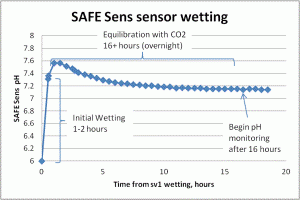What is site standardization?
This procedure is like an initial calibration that is done with CO2 or temperature sensors in incubators. At the time of installation, each TrakPod must be “initialized” to the exact physical environment of your lab so that it will report the correct pH. There are several factors that can impact the displayed pH reading which are corrected for with site standardization. Primarily these are 1) the type of media used, 2) the CO2 concentration and 3) elevation conditions at the clinic. For cabinet incubator installations, additional considerations are proper fixture installation on the incubator shelf and whether or not the fiber optic cable on the TrakPod is compressed and/or bent as part of the installation. TrakStation site standardization is not used initially to help the clinic find the right CO2 settings to get a desired pH. Site standardization is customizing the Trakpod pH calculation and pH read to the incubator conditions using a comparison pH sample under the same conditions. Once the TrakStation is installed the real value comes from maintaining optimal conditions.

